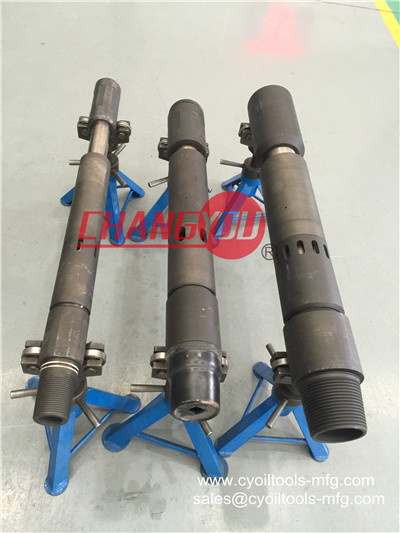HOME >> News >> Industry Information
Formation fluid pressure from drill stem(DST) tests |
[ Time:2018-07-20 | Hits:763 ] |
| Formation fluid pressure from drill stem tests with tools' features of full bore and opening. A drill-stem test, or DST, is the most common method to measure reservoir pressure. DST are the most reliable reservoir pressure measurement method if sufficient time elapses during the test for the higher formation pressure to equilibrate with the lower bore hole pressure. Pressures often must be extrapolated. Irregular boreholes cause tool problems, and assessing the reliability of a DST is often more of an art than a science. Types of periods during a DST. There are three major types of periods during a typical DST: During run-in or run-out periods, drilling fluid flows through ports in the tool wall and pressure gauges respond to the weight of the drilling fluid column. The tester valve is closed. During flowing periods, an interval of the bore hole is sealed off from the rest of the bore hole by one (bottom hole) or two (straddle) inflatable packers. The tester valve is opened, creating a pressure drop in the tool which sucks fluids into the tool and drill pipe string. Recovered volumes of oil, gas, water, or drilling mud are recorded. During shut-in periods, the packer is still inflated and the tester valve is closed. Ideally, pressure in the closed tool gradually builds up until it reaches equilibrium with the pressure of the isolated formation. 
RTTS Circulating Valves
DST pressures may not be reliable because the tool is not shut in long enough for pressure to stabilize at final reservoir pressure. A graphical procedure devised by Horner infers the true reservoir pressure by extrapolating the shut-in periods to infinity. DST pressures from scout tickets Scout tickets are a common source of fluid pressure data. They list the duration of various episodes, the pressures measured during the episode, and the amount and types of fluids recovered. How reliable are scout ticket data and which pressure should one use for formation fluid pressure? As an example, Dahlberg studies 27 DST for formation pressure reliability. He extrapolates the reported pressures to true formation pressure using a Horner plot and finds that pressures must be increased an average of 10 psi. During a DST, two pressures measure the fluid pressure of the formation being tested: the ISIP and the FSIP. The higher is usually closest to true formation fluid pressure. In many cases, it is the ISIP.
(From AAPG Wiki) |